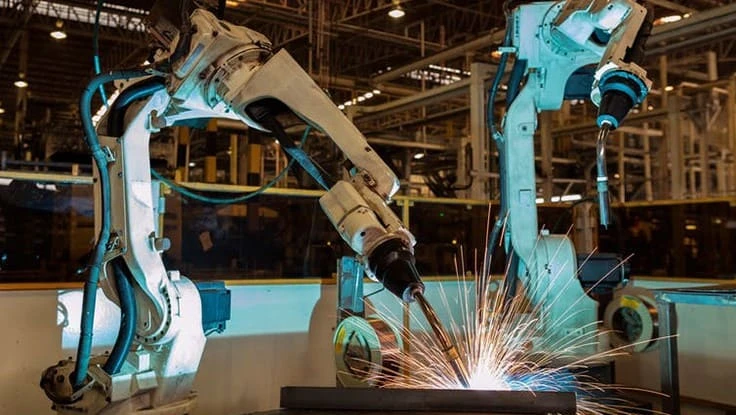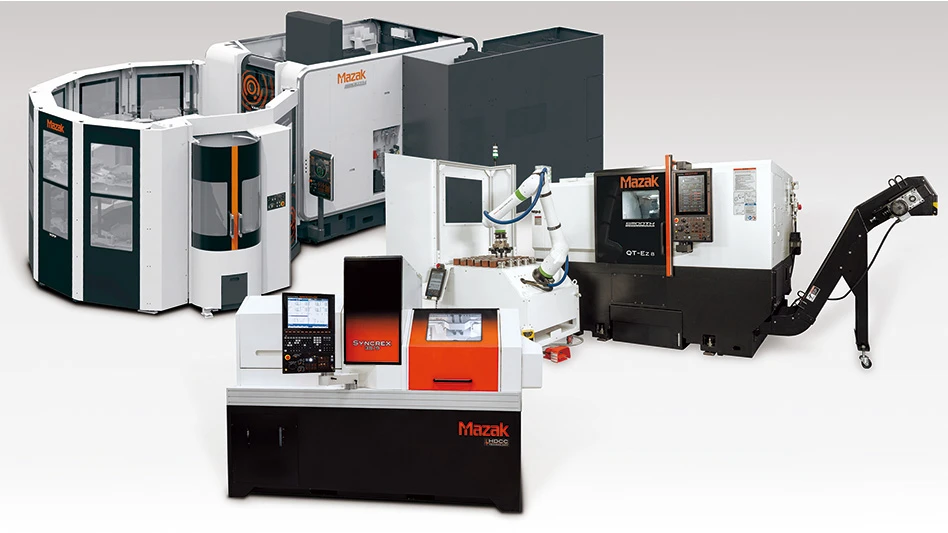
Factory_Easy/Shutterstock.com
We are already 4 days into 2020 but I'm dropping back to 2019 to mention a few medical developments I didn't get a chance to cover in December. ProtoLabs's Cool Idea Award: Healthcare Grant focuses on feeding tube developments; a bionic pancreas received Breakthrough Designation from the U.S. FDA; manufacturing could start talking about Robotic Blacksmithing in the near future. Have you heard of this before? What are your thoughts? And, if you want to see a cadaver's beating heart we have just the video to watch...happy reading!
Reviving a cadaver’s heartbeat
Anatomage has digitally restored a cadaver's heart to beat again, making a cadaver heart go through a normal cardiac cycle. This innovation is made possible by combining the digital modeling of 3D cardiac CT data and accurate anatomical details from an Anatomage cadaver.
Using normal CT images of a heart and statistical models, Anatomage estimated the shape of a heart's four chambers and digitally simulated the cardiac cycle's systole and diastole phases. Valve motions, vascular connectivity, and cardiology nerves were accurately modeled, then integrated into the beating heart chambers. The result is a comprehensively detailed 3D heart of the cadaver that beats in a highly accurate manner.
Anatomage's digital cadavers serve as tools for medical device development, education, research, and training.
Robotic blacksmithing: Technology to revive US manufacturing
The basic concept for robotic blacksmithing, formally called metamorphic manufacturing, was demonstrated in 2017 when a team of undergraduates from The Ohio State University added hardware and software to a conventional computer numeric control milling machine to adapt it for controlled deformation. The work was in response to a US$25,000 challenge by the government-funded consortium LIFT (Lightweight Innovations for Tomorrow) to demonstrate the key concepts of digitally controlled deformation-based shaping.
This new approach has the potential to efficiently and consistently make the structural ‘bones’ inside aircraft, ships, submarines and locomotives. Or the concept could be scaled down to make small individualized medical implants.
Read the full article by Glenn S. Daehn at The Ohio State University's website.
Advanced bionic leg and the team bringing it to life
The world of prosthetics is evolving quickly. It’s no question that researchers, doctors, and engineers want to design more effective robotic limbs that can help paralyzed and amputees live not only more comfortably, but more normal lives. The question is how?
Prosthetics have come to life in a variety of ways, with recent evolvements looking more like a sci-fi depiction of the future. And most of this technology is designed to mimic our body and bring back the function that was lost.
But what if we went further? What if instead of relying on our body to control the technology, we decided to let the technology think for itself? That’s exactly what Dr. Tommaso Lenzi and his researchers at University of Utah’s Bionic Engineering Lab decided to bring to life. And their AI-powered bionic leg will change the future of advanced prosthetics.
Breakthrough Device designation for iLet Bionic Pancreas
Beta Bionics received Breakthrough Device designation from the U.S. Food and Drug Administration (FDA) for its investigational iLet Bionic Pancreas System, a pocket-sized, wearable investigational medical device that is designed to autonomously control blood-sugar levels. The on-body wear is similar to that of an insulin pump. Unlike insulin pump therapy, however, the investigational system is designed such that users enter only their body weight for the iLet to initialize therapy. Immediately thereafter, the iLet begins controlling blood-sugar levels automatically, without requiring the user to count carbohydrates, set insulin delivery rates, or deliver bolus insulin for meals or corrections.

The iLet is designed to function as three medical devices in one. It can be configured as an insulinonly bionic pancreas, a glucagon-only bionic pancreas, or a bihormonal bionic pancreas using insulin and glucagon. The insulin-only and bihormonal configurations may be helpful in diabetes.
The glucagon-only configuration may be helpful in rare conditions that often lead to chronic, low blood-sugar conditions, such as congenital hyperinsulinism (CHI). Beta Bionics is committed to obtaining regulatory approval and commercializing all three iLet configurations.
The Breakthrough Designation for the iLet Bionic Pancreas System contemplates configurations with most insulin analogs approved for pumping as well as dasiglucagon, Zealand Pharma’s stable pumpable glucagon analog, which has a unique stability profile in a ready-to-use aqueous solution.
Healthcare Grant spurs a pair of creative feeding tube inventions
Protolabs announced MedStar Health and Cleveland Clinic Innovations as joint winners of the Cool Idea Award: Healthcare Grant.
“Protolabs is proud to champion innovation in the medical field,” says Vicki Holt, president & CEO of Protolabs. “These healthcare grants and the manufacturing services that come with them help important health-focused projects improve hundreds of thousands of lives each year.”

MedStar Health’s gravity feed syringe holder simplifies the feeding of newborns who spend their early days in special, temperature-controlled incubators while being cared for in the neonatal intensive care unit (NICU). Currently, depending on the number of newborns and how often they feed, a nurse can spend hours each day holding a syringe above an incubator while milk or liquid formula drains into the baby via a stomach tube.
Use of this invention alleviates the need for a nurse to hold the syringe above the baby during the feed and frees the nurse to other duties while still attending to the baby during feeding. The compact device can hold four different sizes of syringes and was designed to be suspended from the top of the incubator or attached to an IV pole expanding its use outside the NICU.
This invention illustrates the premise that simple, well-designed solutions can have a substantial impact on patient care.
The Protolabs grant was used to improve the device’s design. The iterative 3D-printing process helped identify several improvements to the prototype, including: smoothing the corners, adding sturdier syringe clips, and incorporating gaskets to keep infants safe while protecting the incubator. Clamps securely fasten the gravity feeder device to an IV pole.

Feeding tube device could change half a million lives
Life for people with enteral (feeding) tubes can be difficult. Inventor Andy Williams knows this well. He has struggled with an enteral tube for years, so he teamed up with Dr. Eric Blumrosen of Cleveland Clinic in an effort to improve outcomes for these patients. In current practice, a feeding tube is surgically placed directly into the digestive tract, but that interface is prone to significant leakage. The highly acidic fluids can irritate and injure patients such as Williams, requiring emergency room visits and sometimes hospital stays. Leakage can make social lives very difficult, preventing patients from living a normal life.
The device protects the stoma by forming a wide seal around an enclosed hole into which the tube is inserted. This eliminates issues with friction where the tube rubs against the skin. Also, it provides a more focused opening that enhances the seal surrounding the tube and allows limited motion of the tube. In the end, the device will be more comfortable, reduce irritation, and significantly improve long-term quality-of-life.
Protolabs’ in-kind manufacturing grant gave Cleveland Clinic Innovations access to manufacturing engineers who helped improve the device’s design for commercial use. It also helped fund prototype injection molded parts.
About the Cool Idea Award: Healthcare Grant
The Cool Idea Award: Healthcare Grant is an extension of Protolabs’ flagship Cool Idea Award program. This extension is open to members of the Cleveland Clinic Healthcare Innovations Alliance, a network of healthcare institutions and corporations focused on innovation. Selected winners are awarded in-kind manufacturing services from Protolabs to support product development, such as building prototypes or supporting initial production runs, with a target for eventual commercialization of products.
Latest from Today's Medical Developments
- NAMSA will acquire WuXi AppTec facilities in Minnesota and Georgia
- Tolomatic’s Drive Integration Tool
- Cutting Edge Innovations: Maximizing Productivity and Best Practices with Superabrasives
- The toolbelt generation
- Covestro's role in transforming cardiac care
- Practical and Affordable Factory Digital Twins for SMEs
- UCIMU: fourth quarter 2024 machine tool orders on the rise
- Thomson Industries’ enhanced configuration capabilities





